Why the Myanmar military is facing its most serious challenge today
The Tatmadaw's strategic dominance is under threat like never before.
When Senior General Min Aung Hlaing (MAH), the Commander-in-Chief of the Myanmar military (Tatmadaw), ordered the arrest of President Win Myint, State Counsellor Aung San Suu Kyi and other civilian leaders on the first day of February 2021, effectively initiating a coup, he surely had no idea what’s coming for him and his boys.
I’m sure he knew there would be some resistance to the takeover, but he must have quickly assured himself that if his mighty predecessor, Than Shwe, could do it, so could he. I’m also sure he thought it wouldn’t take more than a few hundred arrests, some custodial torture, armed raids, perhaps a bit of open firing at protestors, and a dozen tank parades in cities to tame the recalcitrant parts of the population.
Instead, what MAH is facing today is something that neither the people of Myanmar, nor the outside world has seen in modern history – a constantly growing multi-front political and military war against the Tatmadaw, firmly backed by the majority of the people. In this analysis, we will focus on the military bit.
Over the past five months, the anti-military resistance in Myanmar has branched into two distinct (but interlinked) fronts – unarmed and armed. As MAH’s boys moved in to crush nonviolent protests through brute force, several local civilian militias armed with homemade weapons mushroomed across the country.
Most of these rudimentary formations – christened “Peoples Defence Forces” (PDF) and Local Defence Forces (LDF) – were initially only meant to defend civilians from the military’s violent actions, such as during peaceful protests. But, this is changing now.
Local militias are turning more sophisticated and institutionalised. They are acquiring advanced weapons and training. Assault rifles, snipers and hand grenades are replacing crude gas guns and pipe bombs. Instead of tee shirts and shorts, militia members are now flaunting full military camouflage and Kevlar vests. Local self-defence groups are starting to look like mini armies. Most importantly, these militias are moving from a defensive to an offensive posture, proactively attacking regime targets, even without direct provocation.
This is bad news for MAH, who anyway has to deal with established and well-armed ethnic armies known as Ethnic Armed Organisations (EAO).
Look at these pictures of a PDF in Putao in northern Kachin State, taken from the Twitter account of Jaw Tu Hkawng.
Heavily-armed, disciplined and ready for battle – that’s what the new anti-military strategic front is starting to look like right now.
In fact, according to some reports, the Putao-PDF has even used artillery guns. In civil wars, artilleries, which are usually used by professional standing armies, can be a game-changer for non-state armed groups.


Some of them even have proper logos, such as PDF-Mandalay, PDF-Kalay (Sagaing Region) and the Chinland Defence Force (CDF).
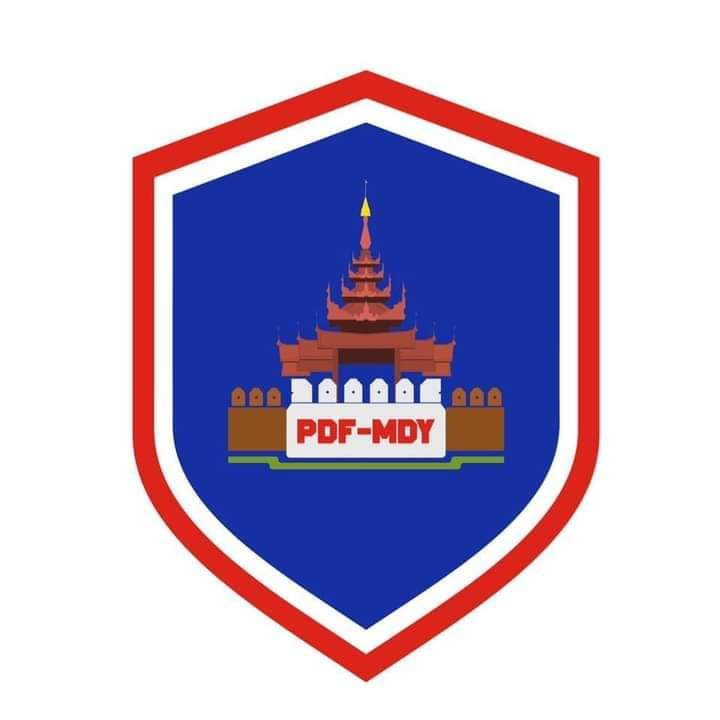



A part of the incorporation of informal local defence groups into the PDF framework is also changing the group names.
For instance, the Tamu Security Group (TSG), a collection of civilian fighters in the India-Myanmar border town of Tamu in Sagaing Region, was later rechristened the Tamu-PDF or ‘TPDF’.
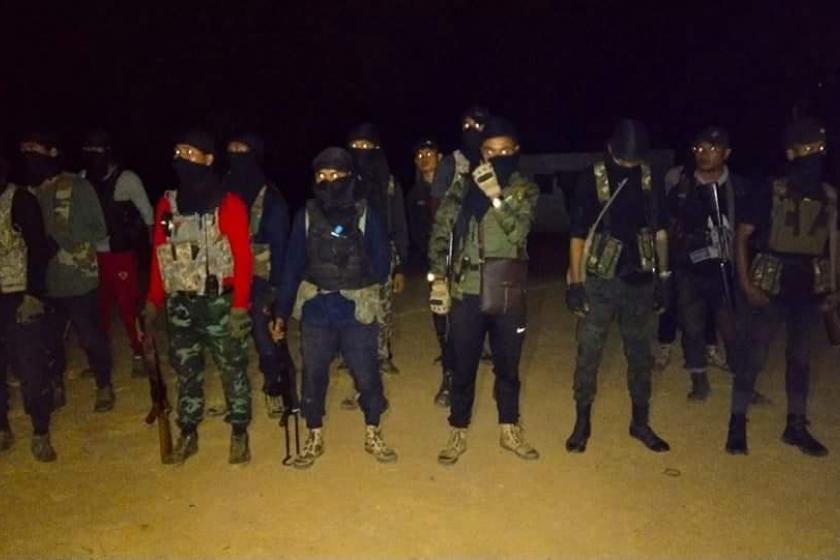
Many of these militias are receiving advance military training from their more experienced and battle-hardened compatriots in the EAOs. In fact, some PDFs are also joining forces with EAOs to target regime forces in ‘hybrid offensives’.
I have been closely tracking the internal conflict spectrum in Myanmar since the 1 February 2021 coup through a dynamic map and database. So far, I have identified six major hybrid offensives in which PDFs and EAOs have launched joint offensives against regime targets. Some of the smaller attacks of this nature haven’t been geotagged yet.
Click on this map link and then select individual yellow event bubbles to get the details of the hybrid attacks.

Such hybrid attacks are of great value to emergent militias such as the PDF. Consider this hybrid attack on Tatmadaw troopers on 7 September 2021 by the local PDF and the Karen National Liberation Army (KNLA) – the armed wing of the Karen National Union (KNU) – in Taung Pyauk village (Thayet Chaung Township) in the southern region of Tanintharyi.
The KNLA is a well-established EAO that has fought the Tatmadaw for decades. By fighting alongside the highly-experienced KNLA, the local PDF gains valuable combat experience, which it can pass on to other PDFs.

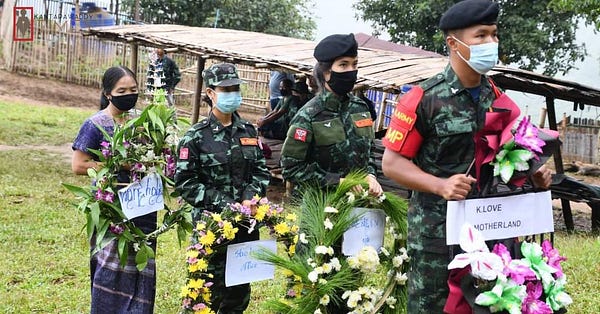
In Kayah State’s Demoso Township, combined forces of Karenni Nationalities Defence Force (KNDF), a coalition of smaller PDFs operating in the state, and Karenni Army, the armed wing of the Karenni National Progressive Party (KNPP), have caused the Tatmadaw great pain over the past few months.
In Kachin State, local PDFs have joined hands with the powerful Kachin Independence Army (KIA) in a unique way. In this dapper music video by the KIA Global Media channel, PDF soldiers are seen hanging out with KIA troops, including in what looks like a joint parade. In fact, some are seen wearing mixed PDF-KIA uniforms.*
Another crucial pattern that has emerged recently is coordination between different PDFs. This is hardly surprising, because…well…stronger together.
The latest example is the reported tactical alliance between the newly-formed Gurkha Defence Force (GDF) (made up of ethnic Nepalese people in northwestern Myanmar), the Tamu-PDF in Sagaing Region and Chin Defence Forces (CDF) in neighbouring Chin State.


Smaller PDFs have also come together to form larger forces. In Kayah State, several armed groups came together to form the fairly well-armed KNDF, which has launched some very daring attacks against the Tatmadaw – including across state lines.
For instance, on 27 September, the KNDF from Pekon Township attacked a military convoy of 45 vehicles in Saung Pyaung Village in Shan State’s Pinlaung, killing twenty troopers.
Notably, the National Unity Government (NUG) – comprising of elected civilian lawmakers – has propped up its own PDF, which calls itself the ‘interim army of the Federal Union of Myanmar’. It is also providing political support and patronage to other PDFs across the country, but doesn’t have full operational control.
The NUG’s Defence Ministry has published a detailed outline of its PDF’s military structure on its website – including the various regional commands, chains of command and responsibilities of the Commander-in-Chief.
It is not yet clear what the exact strength of NUG’s PDF is or what kind of military hardware it possesses.

This is what the NUG’s Defence Ministry says on its website about its PDF:
As a result of the junta’s suppression, the people in Myanmar no longer accept the military in Myanmar as the official army and demanded an army which would truly protect its people and the country. Therefore, the People’s Defense Forces (PDF) was eventually established.
It further says that the PDF “must be an armed force which falls under the civilian control.” That’s opposite of what the Tatmadaw is currently in Myanmar.
Here, it is important to note that while several PDFs have coalesced into localised commands, there is still no unified structure that brings together every single PDF across the country under a single strategic command. In fact, I don’t think there’s even a need for that to happen. In Myanmar, local politico-security actors have always been more effective in achieving specific objectives than centralised entities.
Having said that, the NUG is currently raising a hybrid unified command that is vertically divided into five regional commands: northern, eastern, southern, western and central. Each command appears to be a mixed force of local PDFs and EAOs – as seen in the KIA music video mentioned above.*
For the NUG, leveraging the PDF-EAO unity within its military structure makes sense not only because many of them already have strategic alliances, but also because participation of experienced and heavily-armed EAOs gives a tactical boost to the armed resistance. It also makes it harder for the Tatmadaw to selectively target the relatively weaker PDFs.
Beyond high-intensity offensives by the PDFs, which are like organised forces, there have been several guerrilla type attacks against regime targets by smaller, unnamed groups.
Urban centres like Yangon, Mandalay and Bago have become hotspots for these type of attacks by unidentified actors. Most of them are either small-scale explosions or assassinations of regime officials or military informants.
Click on this map link and select individual green bubbles to get details about these guerrilla attacks.

Let me cite three specific instances that show what these non-PDF guerrilla attacks look like and what they mean in the larger context.
The first one is a series of 12 bomb blasts in Yangon and Mandalay on 29 and 30 August 2021. None of these bombs were designed to inflict serious damage, but detonation of 12 explosive devices in Myanmar’s largest and second largest cities in a single day shows the increasingly high levels of coordination between armed groups.
Although such guerrilla attacks in dense population centres don’t cause personnel damage, they serve well to instill a sense of fear amongst regime forces and also discredit the junta’s claim of protecting the people of Myanmar.

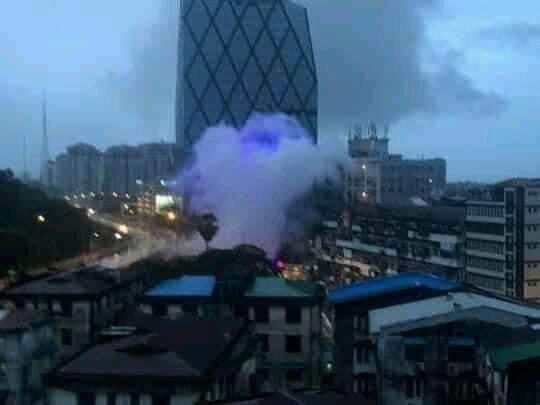

The second is a lethal attack on three junta soldiers, including a deputy battalion commander, in Yangon’s Sanchaung Township by guerrilla forces. Direct hits like these can smash the sense of security that the rank and file might have while moving around Myanmar’s seemingly peaceful cities.



The third is the assassination of an alleged military informant, U Tin Hlaing, in Yangon’s Hlaing Township on 29 August. He was gunned down while driving with his wife, and is just one of the dozens of Tatmadaw informants killed since the 1 February coup.
For resistance groups, neutralising existing informants (thus, deterring future informants from helping the military) is crucial because it destroys the Tatmadaw’s intelligence gathering process. These informants supply crucial information to local commanders about not just the movement of rebels, but also the names and addresses of protest leaders (who are then picked up, detained and tortured, if not killed).
Tatmadaw has another major problem – internal resistance. This has come in two distinct forms: defections and double-agent soldiers.
Close to 2000 Tatmadaw soldiers and police personnel have defected over to the anti-military resistance over the past few months. In recent weeks, 30 of them have moved to the CDF in Chin State alone, taking the total number of defections in the state since the 1 February coup to 350.
A group of defected soldiers have even come together to form a support group for their compatriots. They also have a Twitter page called “People’s Soldiers”:


Another group of military and police defectors called “People’s Embrace” has gained prominence in recent days.*
Never before in recent memory has the Myanmar military seen so many conscientious defections. So dire is the situation that the Tatmadaw is now properly struggling to secure fresh recruitments from its military academies.
Beyond the image dent that the military suffers because of defections, there is great strategic value for resistance groups in inducting defectors. Ex-soldiers bring along valuable information that could strengthen the position of armed groups – such as military deployment patterns, strength of local commands, location of weapons depots and other military assets, and the likes. Knowledge of this type is a great leveler in an otherwise asymmetric battlefield.


The second type of internal resistance is more lethal for the Tatmadaw – double-agent resistance proxies. These are being called ‘Watermelon Soldiers’ – green on the outside, red on the inside. Instead of defecting, they sabotage the military through small attacks from within their ranks.
On 30 September, these Watermelon Soldiers reportedly exploded a bomb in the Military Procurement Office in Naypyitaw – the seat of MAH and his buddies, and also Myanmar’s seemingly impenetrable capital region.
As pointed out by Nicholas on Twitter, the explosion occurred in a highly-secured military compound that can’t be accessed by civilians. So, it is possible that some soldiers either denoted one of their own ordnances or helped ferry one from the outside. See the full thread here:

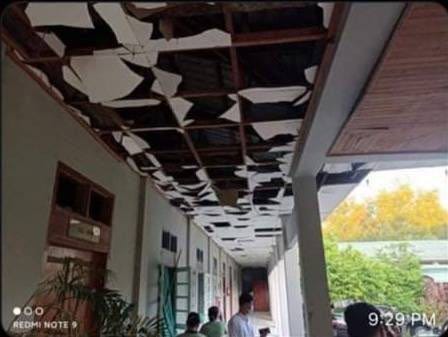



Such insider attacks could be the endgame for the Tatmadaw. However, it is still not clear if this pattern will sustain, for it is exceedingly risky for insiders to carry out sabotage attacks while evading scrutiny by seniors.
With so much happening, is MAH able to sleep peacefully?
Now that the NUG has announced an all-out “defensive war” against the military, Myanmar’s armed resistance is more animated than ever before in the last seven months. And the Tatmadaw has to confront more number of armed groups today than it ever has in its living memory. This means that it isn’t the paramount military force that it once was in the myriad battlefields of Myanmar.
Worse, most of these groups are decentralised and scattered across the country, and yet willing to join forces with each other if need be. This makes it exceedingly difficult for Tatmadaw strategists to neutralise them. As if that isn’t enough, this time, the Tatmadaw is facing the heat of the armed resistance not just from far-flung ethnic peripheries, but also from the Bamar majority heartland – which is supposed to be its core political hearth.
The military’s own people are at war with it. Pretty sure MAH has a few sleepless nights every week – fretting not just over the swelling civilian resistance, but also over the threat of a takeover by some of his immediate juniors who might start doubting his ability to keep the leash tight. He thought he was Than Shwe, living in a bygone era when the people of Myanmar could be forced to submission through machine guns and tanks rolling down Yangon’s streets.
Instead, the great MAH turned out to be a paper tiger – a tin-god confined to his fancy palace, quivering at the prospect of the revolution knocking on his own door one day.
*Updated information. See addendum for details and sources.
Addendum on updates
The following updates have been added post-publication to support the main information in the piece.
As pointed out by Nicholas on Twitter, the NUG is creating a unified command structure, composed of both local PDFs and EAOs. It has five regional commands: north, east, south, west, central.
Refer to the following thread for more information:




Further, he points out that besides the People’s Soldiers, another group of military defectors who have joined the Civil Disobedience Movement (CDM), called “People’s Embrace”, has emerged.




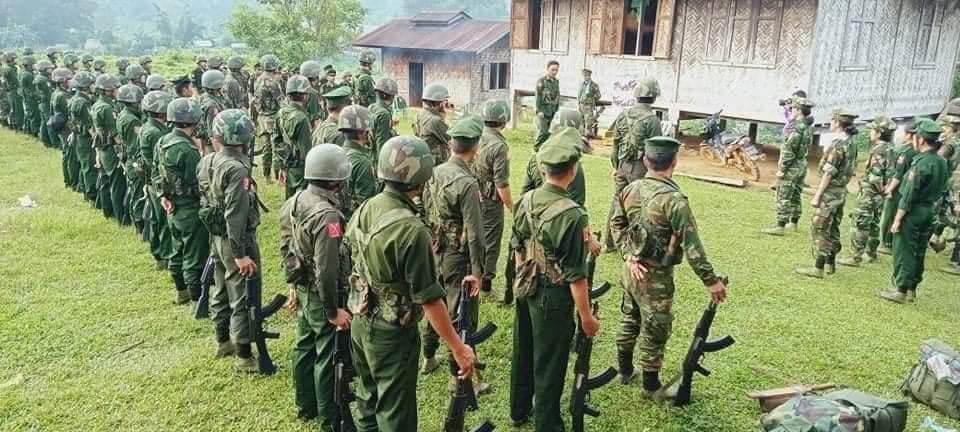


A very detailed in a concise article. Love your work 💗
Myanmar's revolution start with peaceful protests. But brutal military take us today saturation. Brutal military must vanish. The whole world will learn from us. Justice will prevail. We will fight till the Victory.